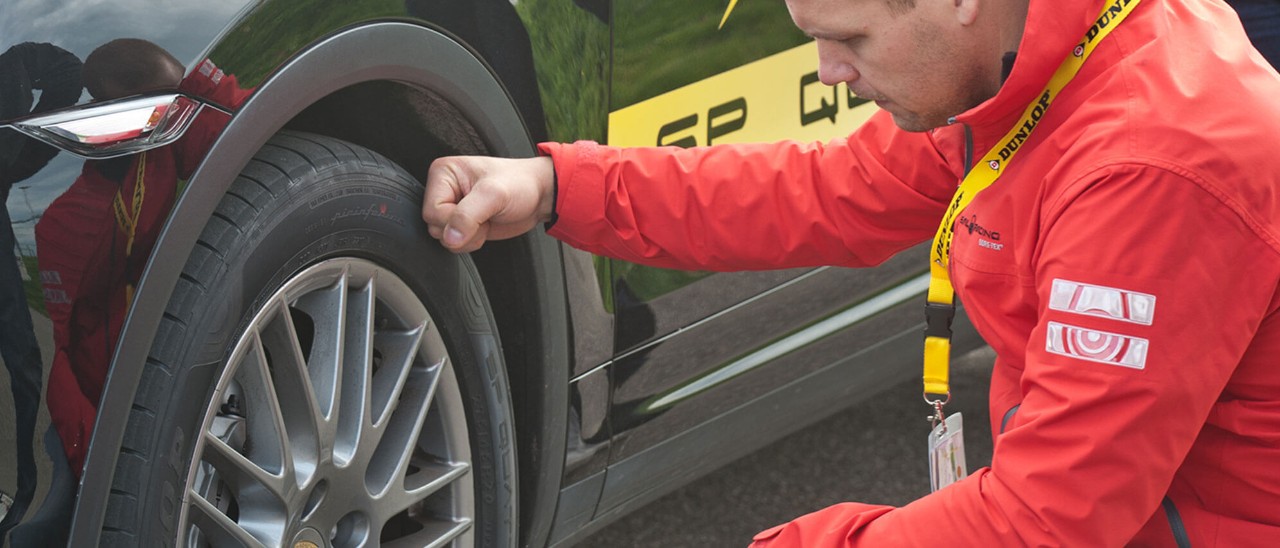A flat tyre is something no one ever wants to be confronted with. However, even with very well maintained premium tyres, a sharp object on the road can pierce your tyre and cause a puncture. For this reason, knowing how to change a flat tyre can be a useful skill to have.
Not only that but changing a flat tyre is not as difficult as you might think. If you prepare your car with the right equipment and follow important safety guidelines, you’ll be able to replace your flat tyre yourself and be on your way.

It is recommended to practice changing your tyre on a sunny day at home to understand where the jack points are and how to work this, rather than figuring these points out for the first time on a dark, wet evening. Here’s our step by step guide on how to change a flat tyre:
Remember that spare tyres are only a temporary solution. So, once you’ve changed your flat tyre, you should drive to a tyre dealer who can advise on repairing your tyre or replacing it. You should also be guided by your vehicle manufacturer’s handbook on your spare tyre’s speed restrictions or driving distance.
Changing a flat tyre should take around 30 minutes. However, the important thing is not to rush and make sure you go through each step carefully. The last thing you want to do is leave one wheel nut loose or forget your warning triangle because you wanted to change your flat tyre quickly. So if you need an hour, take an hour.
Sharp objects are the most common cause of flat tyres. This could be a nail, broken glass or a sharp piece of metal lodged in your tyre. There are other causes too, such as bad road conditions, incorrect tyre inflation or damaged rims. Read our guide on fixing flat tyres for more information.
You can minimise the chance of getting a flat tyre by choosing the right tyres for your car and maintaining those tyres well at all times. This includes keeping your tyres at the optimum pressure levels and not overloading your car with too much weight. You should also be careful where you drive and keep an eye out for any sharp objects on the ground or potholes in the road. However, even the most careful of drivers might still suffer a flat tyre, so it’s a good idea to understand how to change one.
You shouldn’t be tempted to drive on a flat tyre. Instead, come to a stop as safely and as quickly as possible. If you drive on a flat tyre, you are likely to cause damage to the wheel or even the suspension of your car. And if you do that, it will result in a much more costly repair than a new tyre.
If your car has run on flat tyres, you will not have a spare tyre supplied with your vehicle. Instead, the reinforced wall of run-flat tyres should allow you to continue driving for around 50 miles at 50mph (unless your vehicle manufacturer’s handbook advises otherwise). This should give you enough time to get home, or to visit a dealer to have the tyre replaced or repaired. Visit the Goodyear website for a guide to Run Flat Tyres.